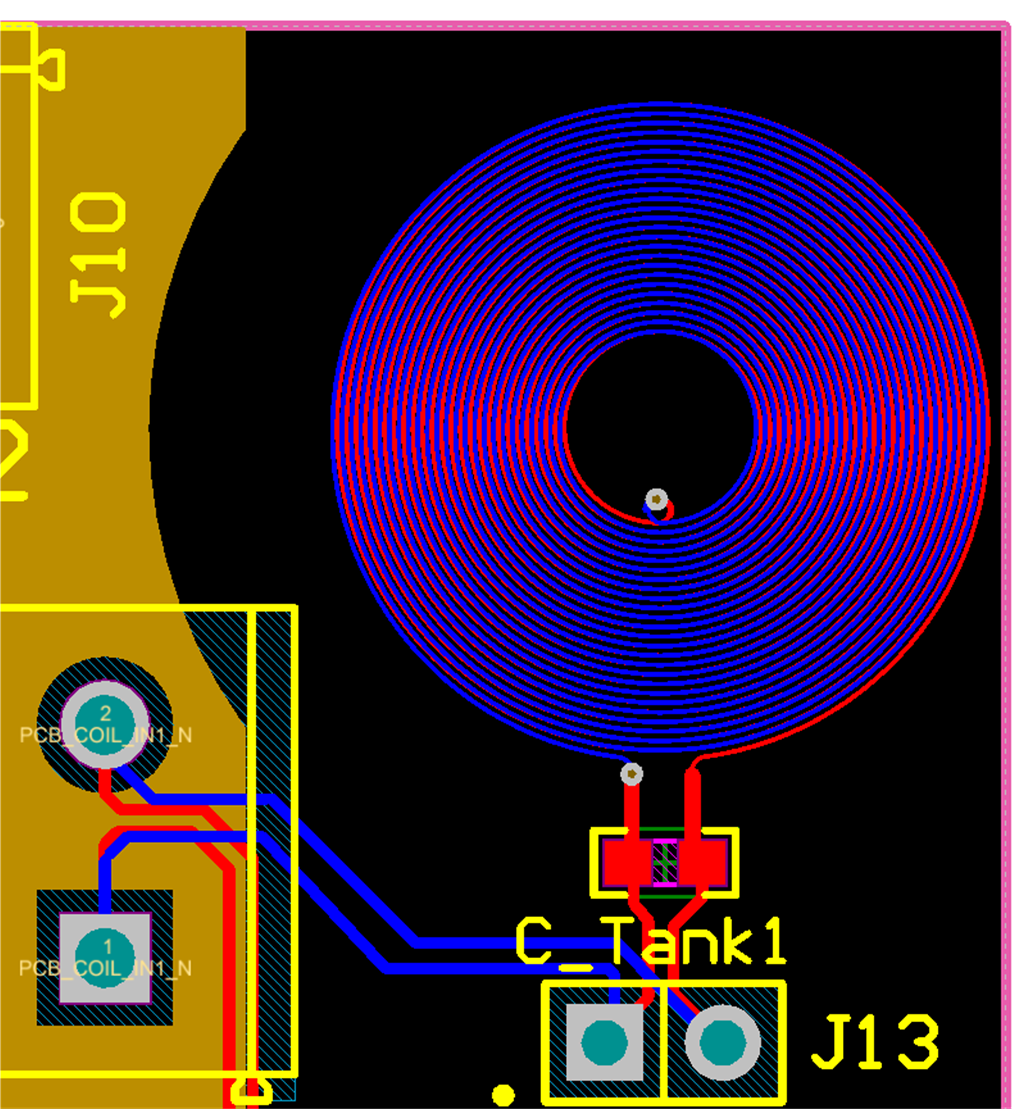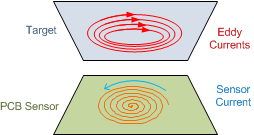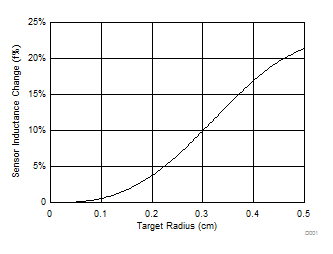SNOA957B September 2016 – June 2021 LDC0851 , LDC1001 , LDC1001-Q1 , LDC1041 , LDC1051 , LDC1101 , LDC1312 , LDC1312-Q1 , LDC1314 , LDC1314-Q1 , LDC1612 , LDC1612-Q1 , LDC1614 , LDC1614-Q1 , LDC2112 , LDC2114 , LDC3114 , LDC3114-Q1
2.1 Image Currents and Target Size
For many LDC applications, a flat spiral inductor printed on a PCB is an effective sensor design. An example is shown in Figure 2-2. Some of the primary considerations for the sensor include the total inductance, the resonant frequency, and the physical size of the inductor.
 Figure 2-2 Spiral PCB Inductor
Figure 2-2 Spiral PCB InductorWhen a conductive target is brought into the magnetic field of the inductor coil, the eddy currents on the surface of the conductor will flow in the lowest possible impedance path. This path take is composed of concentric loops which match the shape of the sensor.
 Figure 2-3 Image Current Flow on Target
Figure 2-3 Image Current Flow on TargetAny differences in the image current path compared to the sensor current path will result in a weaker change in the sensor’s magnetic field. For this reason, the strongest target response occurs when the target size larger than the sensor size, as the image current path can better mirror the flow of current in the sensor. If the target size is smaller than the sensor, the change in sensor frequency will be reduced, as shown in Figure 2-4.
 Figure 2-4 Sensor Inductance Shift vs Target Radius With Target 1 mm From Sensor
Figure 2-4 Sensor Inductance Shift vs Target Radius With Target 1 mm From SensorIn Figure 2-4, the sensor is a spiral of 10 mm diameter, 25 turns per layer, with 4 layers having an inductance of 36 μH. The targets are stainless steel 304 disks, and held coaxially at a 1 mm distance from the sensor. As always, a larger change in the sensor inductance is desirable, since a larger change allows the target position to be measured with higher resolution. When the target radius is less than 0.1 cm, the sensor measurement changes by less than 1% of its nominal value. Position measurement of such a small target will have lower effective resolution due to the smaller inductance change. When the target size is increased to match the size of the sensor, the sensor measurement changes by >21%. This larger shift can be measured with much greater resolution.